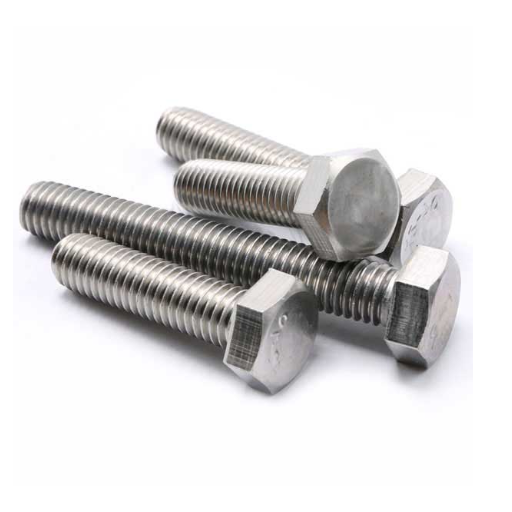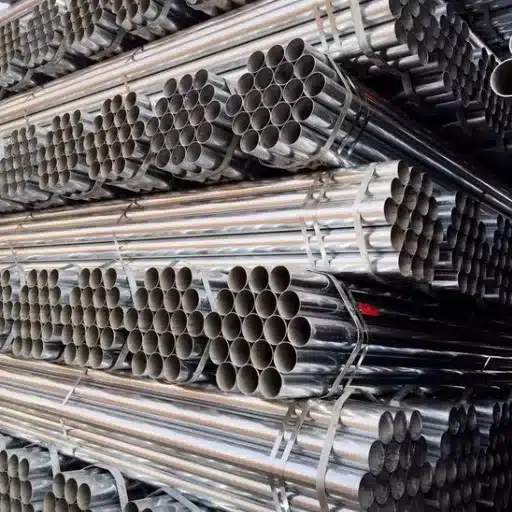Stainless steel fasteners are widely recognized for their strength, durability, and resistance to corrosion, making them essential components across numerous industries. However, not all stainless steel fasteners are created equal, and understanding the variations in material grades can have a significant impact on performance, especially in challenging environments. This article will focus on two of the most commonly used grades, A2 and A4 stainless steel fasteners, exploring their key differences, applications, and suitability for specific conditions. Whether you’re working in construction, marine engineering, or manufacturing, gaining a clear understanding of these distinctions will help ensure you’re choosing the right fastener for the task at hand.
What Are the A2 and A4 Stainless Steel Fasteners?
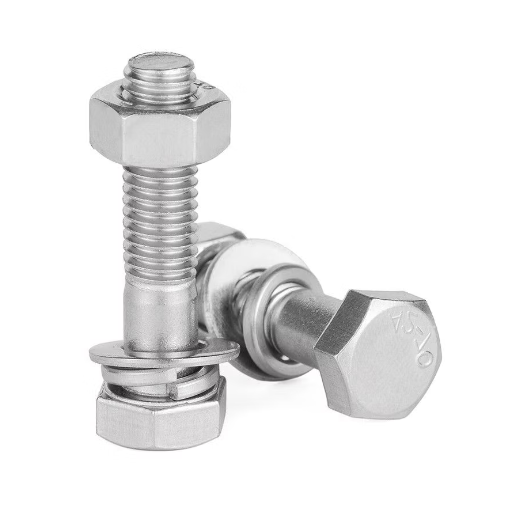
Overview of A2 Stainless Steel Fasteners
A2 grade stainless steel fasteners are noted for their durability in moderate use applications and their outstanding resistance to rusting. These fasteners are made from an alloy of Iron, Chromium, and Nickel which is controlled under the AISI 304 standard. A2 fasteners are therefore non-magnetic and resistant to corrosion as well as oxidation which allows them to be used in places with moderate moisture or non-aggressive chemical exposure.
These fasteners are commonly used in a variety of industries, including construction, automotive, and manufacturing. They can be installed in outdoor or indoor environments with little risk of the chemicals altering the material. On the other hand, environments with severe levels of corrosion like saltwater and acidic substances should be avoided, seeing how constant interaction greatly increases the chance of stress corrosion cracking or pitting over time.
A2 stainless steel fasteners remain economically favorable while still balancing performance. They do have their limits which come in form of having to be used in low to moderate amounts of salt water and acidic substances. However, their performance across a wide temperature range, alongside low maintenance, makes them incredibly versatile. Proper evaluation of the mechanical needs of the application and the environmental conditions is crucial when choosing A2 fasteners to achieve preferred performance standards over time.
Introduction to A4 Stainless Steel Fasteners
A4 stainless steel fasteners are known for their distinctive features like remarkable corrosion resistance and exceptional durability in tough conditions. Since A4 fasteners contain more molybdenum than A2 stainless steel, they protect better against chlorides like seawater or chemicals which cause pitting and crevice corrosion. This makes A4 fasteners appropriate for marine, industrial, and other applications where corrosion is a major concern.
These fasteners fall into the category of 316-grade stainless steels which are known for remarkable strength and having good oxidizing and reducing agents resistance. A4 stainless steel also has high tensile and yield strength which maintains the structure under static and dynamic loading conditions. They can also be subjected to high temperatures without their structural integrity being compromised, making them reliable in thermal applications and increasing their usability in many industries.
Due to the higher rates of A4 fasteners, one needs to evaluate all the environmental conditions along with load conditions before selecting them. They can be subjected to prolonged exposure to moisture, salt, or chemicals, thanks to their high corrosion resistance. Despite A2 fasteners being more cost-effective, critical and demanding applications where maintenance and durability are foremost concerns necessitate the use of A4 fasteners, or else the long-term benefits of these fasteners pay off.
Common Properties of A2 and A4
A2 and A4 stainless steel fasteners have several primary power features which confer high-applicability multi-industry use. Both grades are non-magnetic and exhibit remarkable resistance to corrosion and oxidation under standard atmospheric condition. These features allow general-purpose fastening in applications which require high durability and longevity.
Both A2 and A4 stainless steels fall under the austenitic class, which is defined by its high chromium and nickel composition. This composition ensures outstanding mechanical and physical properties like strength, ductility, and weldability. Such features allow smooth fabrication and reliable structural and mechanical performance.
In addition, A2 and A5 stainless steels are characterized with high tensile strength and wear resistance making them suitable for high-stress applications. While A4 is known to outperform A2 in terms of corrosion resistance because of its extra molybdenum, both maintain excellent resistnace to rust and pitting in less aggressive environments. With great versatility in design and operational dependability, these materials remain staples in a host of technical and commercial applications.
How to Identify A4 and A2 Stainless Steel Fasteners?
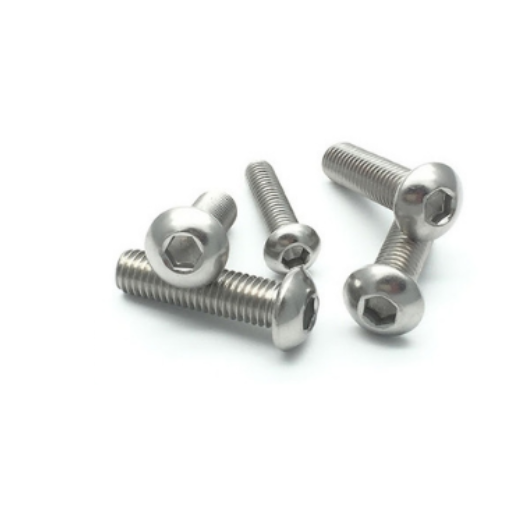
Recognizing A4 Stainless Steel Fasteners
In the process of A4 identification, I use some specific markings and metallic properties that aid in distinguishing them from other grades. A4 fasteners are usually marked with an “A4” engraving, which serves as an indication of their composition. It is known to bear an engravable designation by the 316 family of stainless steel since it consists of molybdenum, a type of alloying element, which makes it resistant to Chlorides, overall corrosion in marine and chemical environments.
I also consider the geographic region where the bolt will be used. A4 stainless steel fasteners are particularly well suited for places with high levels of salt and humidity, or acidity. Shipbuilding and chemical process industries prefer these fasteners, along with the construction of buildings in coastal areas. Aggressive conditions make its strength superior, withstanding corrosion unlike A2 fasteners.
Seeing both the physical marking and the environmental requirements ensures the right specification of A4 fasteners for whatever application is needed. Following this detail will eliminate misidentification of samples in aggressive environments while ensuring reliable performance and weathering extreme conditions.
Visual and Physical Differences
The alteration and distinction in the appearance and structure of A2 and A4 stainless steel fasteners can only be attributed to their chemical composition, rust resistance, and application reason, since they do not have any distinctive visuals owing to being polished in the same manner.
|
Attribute |
A2 Stainless Steel |
A4 Stainless Steel |
|---|---|---|
|
Type |
304 |
316 |
|
Cr Content |
16-20% |
16-18.5% |
|
Ni Content |
8-12% |
10-14% |
|
Mo Content |
None |
2-3% |
|
Rust Proof |
Moderate |
Superior |
|
Salt Resist |
Average |
Excellent |
|
Durability |
700 MPa (min) |
800 MPa (min) |
|
Usage |
Standard |
Marine, Industrial |
|
Price |
Lower |
Higher |
What Is the Difference Between A2 and A4 Stainless Steel?
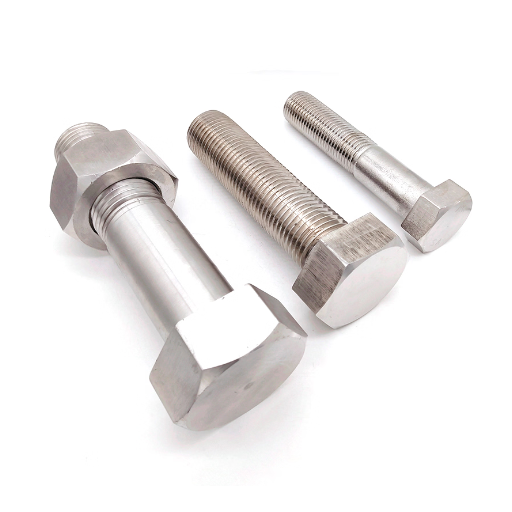
Material Composition and Chromium Content
While A2 and A4 differ in their composition, their grades of stainless steel differ in their chromium (Cr), nickel (Ni), and molybdenum (Mo) content. A2, or Type 304 stainless steel, has 16-20% chromium and 8-12% nickel with no molybdenum. A4 also has chromium of 16-18.5% but with 10-14% nickel and 2-3% molybdenum, classifying A4 as Type 316. Their differing compositions also result in different material properties, making them suitable for different applications.
When discussing corrosion resistance, chromium plays a critical role. As previously noted, both A2 and A4 have similar amounts of chromium which allows them to form an oxide layer that protects against rust during Standard Operating Conditions (SOC). In contrast, A4 stainless steel’s molybdenum gives it the ability to withstand harsher conditions, particularly chloride or salt environments which usually lead to pitting. This makes A4 ideal for marine or corrosively industrial applications.
In the end, the decision about whether to use A2 or A4 stainless steel will depend on the application to be used. A2 stainless steel is appropriate for less extreme environments where cost efficiency is a priority due to its operating conditions. Though A4 stainless steel is more fit for extreme environments such as salt water, high humidity regions, or chemicals, it is less cost-effective. Ensuring that the appropriate material, which is known for outstanding results, tailored to specific needs, is selected guarantees optimal performance.
Impact of Molybdenum Addition in A4
Adding molybdenum to A4 chromium stainless steel increases strength, making it more useful for harsh environments. Molybdenum makes the alloy better for combating pitting and crevice corrosion in marine environments. This is due to molybdenum’s capability to defend the steel’s passive oxide layer, which prevents corrosion.
Molybdenum aids in the better stabilizing of the structure of A4 stainless steel at high temperatures, protecting it from thermal degradation. Research confirms that molybdenum’s peak value is two to three percent by weight, proving an ideal balance between workability and durability amid high temperatures.
Molybdenum translates into A4’s strength alongside chromium and nickel, improving stress resistance in seawater. This simple metallurgy ensures steel A4 is preferred for fasteners used in the marine industry, storage tanks, and processing equipment due to its high resistance to corrosive environments.
Comparison: A2 vs A4 in Terms of Corrosion Resistance
Stainless steel A4, due to its molybdenum content, withstands corrosion much better than A2, particularly in chloride, saltwater, or chemical environments.
|
Attribute |
A2 Stainless Steel |
A4 Stainless Steel |
|---|---|---|
|
Type |
304 |
316 |
|
Cr Content |
18% |
16-18% |
|
Ni Content |
8-10.5% |
10-14% |
|
Mo Content |
None |
2-3% |
|
Chlorides |
Vulnerable |
Resistant |
|
Saltwater |
Limited |
Excellent |
|
Chemicals |
Moderate |
Superior |
|
Pitting |
Moderate |
High Resistance |
|
Applications |
General |
Marine, Chemical |
Why Choose A4 Stainless Steel Fasteners for Marine Applications?
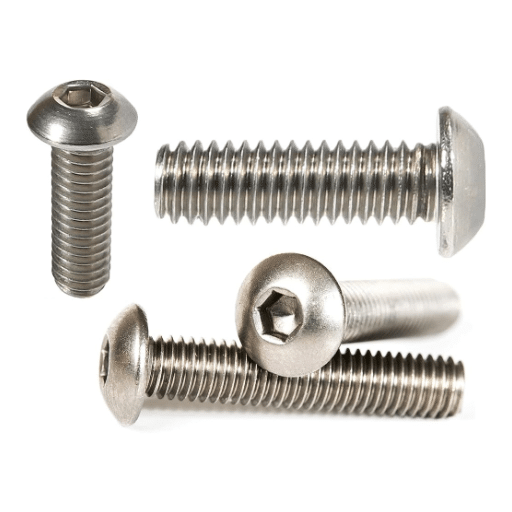
Benefits of Marine Grade Stainless Steel
Marine grade stainless steel, such as A4 stainless steel (Type 316), has several crucial benefits for use in areas where there is considerable exposure to seawater, chlorides, and harsh chemicals. A list of benefits with specific attributes is given below:
- Excellent Corrosion Resistance: A4 stainless steel possesses 2-3% molybdenum (Mo) which greatly enhances its resisting ability to pitting and crevice corrosion due to chlorides and saltwater. This makes it useful in marine and coastal areas.
- Superior Strength and Durability: Due to the alloy composition of A4 stainless steel, which includes 10-14% nickel (Ni) and high chromium at 16-18%, it has exceptional structural integrity. It does not easily lose its strength with long term exposure to corrosive conditions.
- High Resistance to Chemical Exposure: A4 stainless steel is highly resistant to aggressive chemicals, acids, and even alkaline solutions which makes it ideal for use in industrial applications like chemical processing plants.
- Long Lifespan and Low Maintenance: A4 stainless steel is highly resistant to environmental factors and therefore requires minimal maintenance It also has a greatly extended service lifespan compared to other materials which results in lower life-cycle expenditure for end users.
- Improved Design and Cleaning Properties: A4 stainless steel’s smooth surface is aesthetically pleasing, easy to keep clean, and suitable for hygienic applications as it resists staining.
These benefits collectively highlight why A4 stainless steel is the material of choice in demanding marine, industrial, and chemical environments.
Understanding the Corrosion Resistance in Saltwater Environments
Due to their precise chemical composition and microstructural properties, A4 stainless steel, commonly categorized as type 316, exhibits remarkable saltwater resistance. Furthermore, the alloy consists of roughly 16-18% chromium, 10-14% nickel, and 2-3% molybdenum alongside small quantities of carbon and manganese. Molybdenum’s reputation for improving the alloy’s ability to withstand pitting and crevice corrosion in chloride-rich environments (e.g., seawater) is well documented.
In A4 stainless steel, exposure to salt-laden environments leads to the formation of a passive chromium oxide layer. This layer, although microscopically thin, is strong enough to greatly slow down the electrochemical reactions responsible for corrosion. In addition to being a barrier, when this layer is disrupted, the self-healing properties of chromium yield speedy reformation, fortified by the presence, guaranteeing durability.
Moreover, empirical testing aims at determining the critical pitting temperature (CPT) shows A4 stainless steel sustaining critical corrosion resistance pitting well beyond countless other common materials, such as standard carbon steels or type 304 stainless steel. For instance, A4 stainless steel demonstrates remarkable resistance to pitting while sustaining structural integrity under long-term exposure to lab-simulated seawater with 3.5% sodium chloride concentration.
This blend of chemical stability and self-passivation further explains why A4 stainless steel is widely used in the marine industry, offshore platforms, or water treatment facilities. The resistance of these steels dramatically decreases the maintenance and service costs over the lifetime of the device, especially in cases where salt water will be encountered.
Applications in Marine and Coastal Environments
Marine and coastal applications use A4 stainless steel due to its exceptional resistance to corrosion and durability under hostile conditions. It is widely used in the construction of vessels hull components, propeller shafts, and deck fittings through which seawater flows. It is used offshore as well in oil and gas platforms where high-strength, corrosion-resistant materials are needed to endure incessant saline-waters and extreme weather conditions.
Desalination plants, along with infrastructure, gooey-salt infested treatment systems utilize A4 stainless steel. Brine-abusing processes require high chloride resistance, which ensures admirably dependable performance, making sure constructions can survive enduring with little degradation. This material is also important in building wave and tidal energy systems, where corrosive environments with constantly mechanically stressed conditions demand strong engineering solutions.
Compared to other alternatives which are less reliable and may require replacements or maintenance, A4 stainless steel delivers enhanced long-profile performance. Integrating such steel in marine systems yields practical advantages contributing towards stepping stone sustainable infrastructure design in coastal- ocean environments.
What Are the Common Properties of A2 and A4 Stainless Steel?
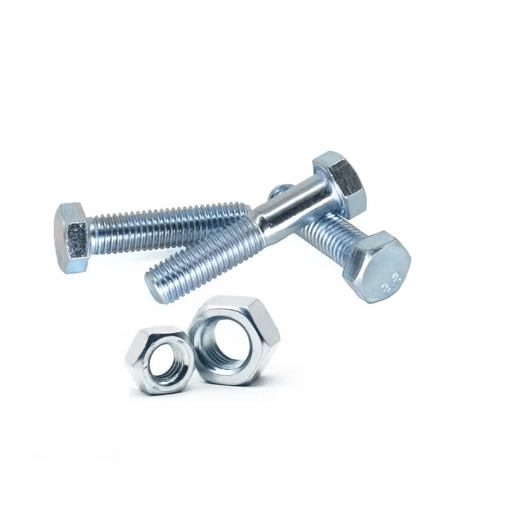
Mechanical Strength and Tensile Strength
The remarkable mechanical and tensile strengths of A2 and A4 stainless steel alloys are attributed to their alloy compositions. Grade A2 Stainless steel, commonly classified under grade 304, has a yield strength of about 215 MPa and a tensile strength of 505 MPa. Having a mild strength as compared to other grades will allow for easy fabrication and great corrosion resistance making A2 an ideal candidate for parts that need to withstand moderate pressure.
In comparison to A2, A4 stainless steel of grade 316 is said to possess advanced mechanical properties when faced with chlorides or acidic elements. This comes from the modification to A4 with the addition of Molybdenum (2% to 3%), which greatly improves its pitting resistance and stress corrosion cracking. A4 exhibits yield strengths of 240 MPa to 290 MPa with ultimate tensile strengths of 620 MPa, depending on specific processing parameters like annealing or cold working.
The diverse applications of A2 and A4 stainless steels are due to the differences in the tensile and mechanical strength of each. A2 stainless steel is utilized where there is a “mild” to medium strength requirement. In contrast, A4 stainless steel is used in more demanding fields like marine engineering and chemical processing, where structural strength is required under continuous mechanical forces and corrosive environments. These features allow both grades to adhere to rigorous industrial requirements, under enabled conditions such as stress, ensuring high modern engineering A2 would be usable, cementing them as critical materials in an engineering context.
Resistance to Pitting and Crevice Corrosion
The resistance to pitting and crevice corrosion is very important for materials that are used in corrosive environments like marine and chemical industry applications. These types of corrosion occur due to the failure of protective oxide layers, which causes metals to corrode faster in confined spaces or poorly aerated areas. A4 stainless steel, for example, has better resistance because of greater molybdenum content, which helps prevent chloride pitting and supports apot stability in more saline environments.
Comparative research indicates that although standard A2 stainless steel has moderate resistance under comprehensive conditions, it becomes more prone to pitting when chloride concentration exceeds approximately 200 ppm. Conversely, A4 stainless steel withstands such conditions more effectively, which is beneficial for submerged applications or those that require long-term exposure to aggressive chemical agents. Laboratory testing has also quantified this performance, where A4 A2’s resistance to pitting was found to be greater under a CPT, which puts pitted structures at greater risk than A2’, making A4 more suited for harsh structural environments.
Assessing pitting and crevice corrosion helps engineers to choose the right materials for specific industrial applications which meets the requirements of durability, safety, and devices in their design and operation.
Uses and Applications in Various Industries
The uses of A4 stainless steel are numerous and expand with its advanced technology, owing to increased corrosion resistance, mechanical strength, and thermal stability. Marine Engineering favours A4 due to its exceptional performance under harsh conditions, as it is exposed to salt water, which, for alloys with lesser resistance, space, would corrode at an accelerated rate. Similarly, A4 is also preferred in the chemical processing industry, enabling machines that have to endure prolonged contact with acidic or alkaline fluids to maintain integrity and durability.
A4 is beneficial in the healthcare sector too, thanks to its biocompatibility and resistance to body fluids. It allows A4 to be a crucial component in surgical instruments and implants. Also, A4 is deployed in offshore oil rigs and gas platforms, and pipelines, taking advantage of its ability to withstand severe pressure and temperature variations. Further, A4’s architectural properties allow it to be used in the construction of facades and structural components in polluted or coastal environments, protecting the aesthetic appeal and structural integrity.
Further solidifying A4’s status as the material of choice in numerous sectors, adaptability enhances the capabilities offered by rigorous testing and continued advancements in metallurgical processing that provide modifications for specific industries.
References
- Evaluation of Stainless Steel Fasteners for Bolted Field Splice Connections of ASTM A1010 Corrosion-Resistant Steel Plate Girders- This study evaluates the performance and corrosion resistance of stainless steel fasteners, providing insights into material differences.
- Fasteners: Strength and Quality Requirements– Published by ASME, this paper discusses the quality and strength requirements of stainless steel fasteners, including precipitation hardening and corrosion resistance.
- AISI Standard for Structural Steel Connections- This document provides standards and specifications for fasteners, including stainless steel grades, ensuring compliance with industry norms.
Frequently Asked Questions (FAQ)
Q: What are the main differences between A2 and A4 stainless steel fasteners?
A: The main differences between A2 and A4 stainless steel fasteners lie in their composition and corrosion resistance. A2 material, often referred to as 304 stainless steel, contains 18% chromium and 8% nickel, making it suitable for general use. A4 material, also known as 316 stainless steel, includes the addition of molybdenum, which enhances its corrosion resistance, especially in marine environments. A4 grade is more corrosion resistant compared to A2 and is used in harsher conditions.
Q: How can I identify A2 and A4 stainless steel screws?
A: You can identify A2 and A4 stainless steel screws by checking for markings on the head of the screw. A2 screws are often marked with “A2-70” and A4 screws with “A4-70” or “A4-80,” indicating their grade and minimum tensile strength. Additionally, A4 screws are usually more expensive than A2 due to their higher corrosion resistance capabilities.
Q: Why is A4 stainless steel more corrosion resistant than A2?
A: A4 stainless steel is more corrosion resistant than A2 due to the addition of molybdenum in the alloy. This element enhances its ability to resist solutions of sulfuric acid and other corrosive environments, making A4 grade ideal for use in marine and outdoor applications where exposure to harsh conditions is common.
Q: What are the applications of A2 and A4 stainless steel fasteners?
A: A2 stainless steel fasteners are commonly used in environments that do not require high corrosion resistance, such as indoor applications or where they are not exposed to harsh chemicals. A4 fasteners, on the other hand, are used in marine settings, chemical industries, and other harsh environments due to their high corrosion resistance.
Q: Is 316 stainless steel the same as A4 grade?
A: Yes, 316 stainless steel is equivalent to A4 grade. Both terms refer to the same composition, which includes the addition of molybdenum for enhanced corrosion resistance. This makes A4 grade a preferred choice for more corrosive environments.
Q: What does the term “18-8” mean about stainless steel fasteners?
A: “18-8” refers to the composition of stainless steel, specifically 18% chromium and 8% nickel. This composition is typical of austenitic stainless steel, such as A2 material, and provides a good balance of strength, corrosion resistance, and ease of fabrication.
Q: Are A4 stainless steel fasteners more expensive than A2?
A: Yes, A4 stainless steel fasteners are generally more expensive than A2 due to the addition of molybdenum, which enhances their corrosion resistance. This makes them suitable for more demanding applications, but also increases their cost compared to A2 fasteners.
Q: Can A2 and A4 stainless steel fasteners be used in welding applications?
A: Both A2 and A4 stainless steel fasteners can be used in welding applications. However, care must be taken to select the appropriate filler material to maintain the integrity of the weld and to ensure that the corrosion resistance properties are not compromised.
Q: What is the minimum tensile strength of A2-70 and A4-70 fasteners?
A: The minimum tensile strength of A2-70 and A4-70 fasteners is 700 MPa. This rating indicates their ability to withstand pulling forces, making them suitable for a wide range of applications that require high strength and durability.

